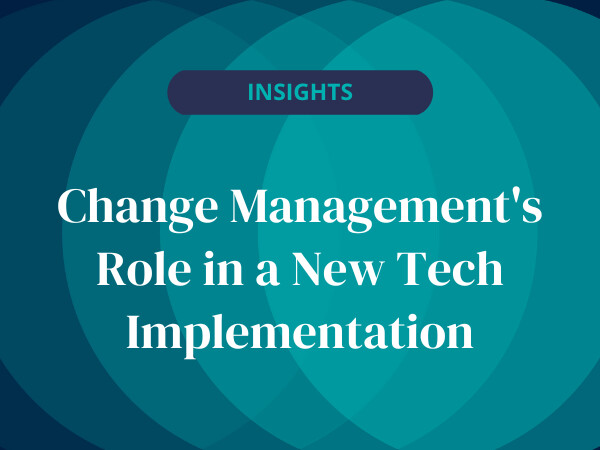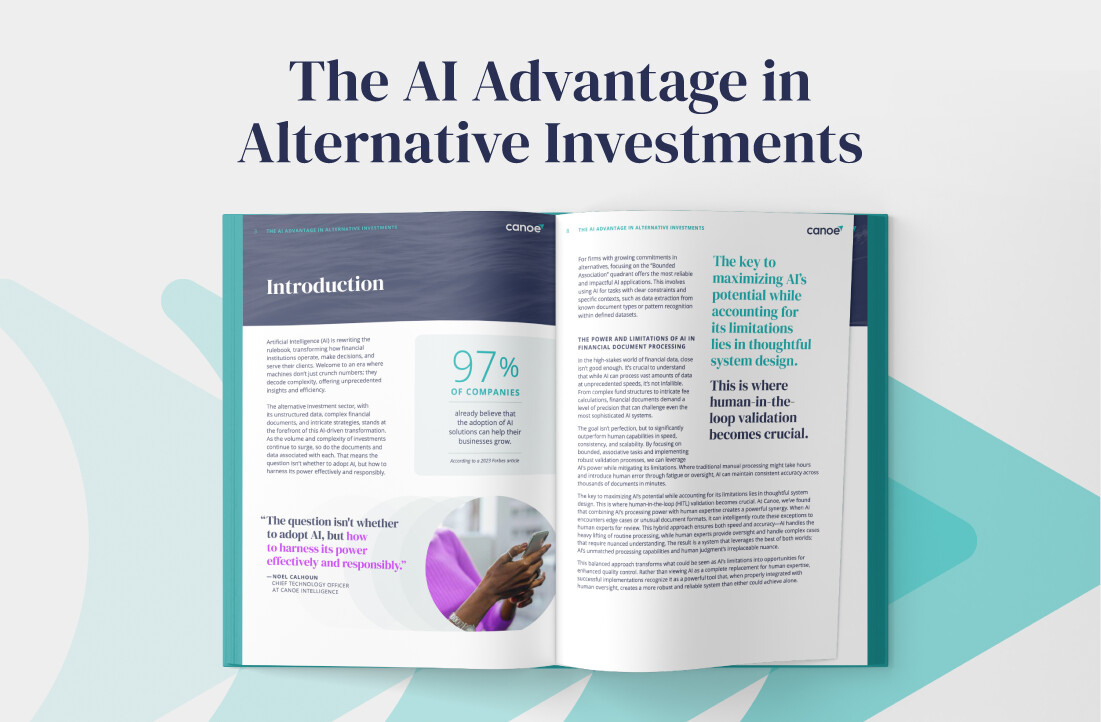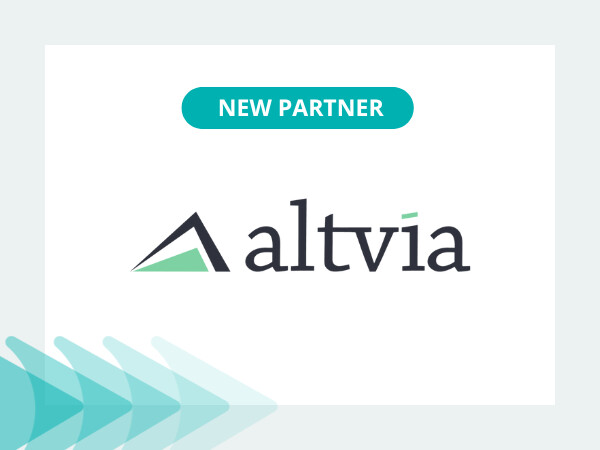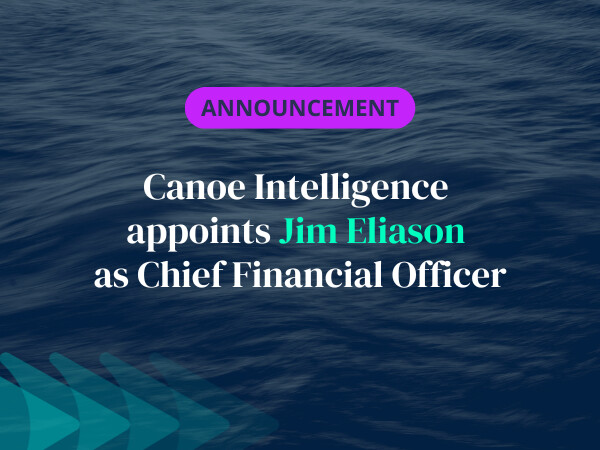Canoe Thought Starters: How much can automation factor into employee retention at wealth management firms?
Canoe Thought Starters is a blog series that explores timely topics for single-family offices, multi-family offices, registered investment advisors, and private banks. These discussions are inspired by our recent conversations with clients, prospects, and influencers in the industry. These blogs are designed as thought exercises to drive conversations within your firm, and this month we are focused on the role that automation can play in driving employee retention at a wealth management firm.
Shifting Employee Priorities Amid the Current Labor Market
As we wrap up 2022, one trend widely expected to continue is the evolution of the employee/employer relationship, with some sources predicting that new developments await in 2023. Even in industries that seem on track to return to normal, it is clear that priorities have shifted and that employers must adjust their strategies to keep up with the workforce’s new perspective. Not only is it expensive to hire new employees—with Gallup estimating that replacing an employee is twice as expensive an endeavor as that employee’s annual salary—but the ongoing staff shortages and turnover rates across the financial industry have resulted in the slowdown of internal career development programs and investment initiatives.
The irony is that the programs put on pause are often the very same programs that would make the firm more attractive to the talent. The level of turnover means that overstretched employees are often asked to train new hires. And, the added training responsibility requires even more time away from their core tasks and focus away from their broader ambitions. We frequently see this challenge in our conversations with prospective Canoe clients.
“Prior to using Canoe, we spent a lot of time entering manual data, account values, capital calls, and distributions into our fund portfolio tracking system. And, once we entered the information, we would then have to check to make sure we included all the investors and recorded it correctly. So much of our time was spent on data entry and review that we seemed to have little time for anything else,” notes Brad Martin, CFO at Legacy Knight : Multi-Family Office.
One of the key formulas to business success is striking the right balance between business needs and employee happiness. An employee’s perception of a role goes far beyond the compensation and benefits package, and this is true regardless of seniority. To drive increased employee retention, the work itself needs to be compelling, the company must emphasize career development, and the employee’s personal career ambitions should be acknowledged.
Manual Tasks Leading to Increased Turnover
Wealth managers face huge volumes of manual processing and limited amounts of standardization, especially when it comes to alternative investments. While vital to the business, this work is time-consuming and monotonous, leaving much to be desired by those performing it. Managing manual data processes might be likened to working on an assembly line: employees spend inordinate amounts of time on one piece of the puzzle, and less time focusing on the tasks that generate impact recognition, such as analyzing investment trends or conducting client meetings. As noted by Decisionwise, the relationship between effort and impact is a major driver of employee engagement. These manual tasks often fall on someone who is overqualified and looking to use their skills to drive more value, or they are left to the junior employee without consideration for career ambitions. If required to focus heavily on menial tasks, these individuals will likely lose sight of their impact, affecting their motivation. As such, traditional solutions are not ideal for promoting job satisfaction or long-term employee retention.
Whether it be retrieving documents from various portals, extracting relevant valuation and transaction data, or manually entering that data into downstream systems, these tasks amount to hours upon hours of employees’ time each week when performed manually. These processes are also fraught with challenges. Manual work is naturally followed by human error — in this case, missing a capital call, fat-fingering a valuation, or duplicating a transaction is common. All in all, these tasks add up to a job description that is not highly desirable, interesting, or rewarding, causing employee dissatisfaction to build and ultimately resulting in turnover. To further compound the issue, the high turnover rate means that new hires must be trained quickly to manage client demand. The training process requires both the new joiner and tenured trainer to spend even more time away from their regular tasks and professional development.
Having talented employees perform mundane tasks rather than the higher-value initiatives that align with their ambitions is a recipe for limiting growth and increasing turnover. “Talent is hard to come by and people are realizing that having highly-educated and skilled people manually extract data from documents is a huge waste of resources, especially when Canoe can do it more quickly and accurately,” noted Toby Bailey, VP of Sales, EMEA at Canoe.
Fortunately, companies like Canoe solve this problem by powering alternatives document collection and data extraction processes through automation. Martin notes, “As a company that provides white-glove service to our investors, we’d be juggling growing the business and providing our investors with new and amazing alternative investments. With Canoe, we do not have to choose. Utilizing Canoe has automated the back office workflow and enabled us to move full steam ahead with our plans for growth.”
Introducing Automation
There are a number of benefits to automating any workflow. First and foremost, systematic processes improve speed and capacity as the automation frees up time to focus on other priorities. This reallocation of effort away from time-consuming manual workflows towards specialized, higher-impact tasks or their personal interests and ambitions makes the job description much more attractive. Moreover, employees are less likely to fatigue quickly and more likely to find value and purpose in their daily work.
Automation also brings increased accuracy to your organization. “We had employees sending the same documents more than once to the performance team and experiencing challenges in logging into different portals due to authorization codes being sent to the wrong person. From a data perspective, we had to manually pull data from various PDFs and input them into a database by hand. So many errors existed in our system because of this,” said Tim Decilveo, Co-Founder, Chief Investment Officer, and Head of Technology at XO Capital LLC.
The traditionally manual nature of document and data management workflows is both unsustainable in the sense that it limits the firm’s capacity to grow and contributes to high levels of employee turnover. Automation also helps wealth managers look to the future through optimized infrastructure and performance. “As our firm grew, it became clear that our current procedures for collecting and processing data were not sustainable, and the disorganization related to tracking the files was causing more confusion than clarity,” shared Mark Shoberg, Co-CIO & Managing Partner at Capital Creek Partners. “Using Canoe’s technology to detect and upload various points of data to our reporting system has saved us valuable employee time. After a successful implementation of Canoe, our Operations department was able to spend more time on client-focused activities and firm growth. With this found time, we were able to reevaluate our hiring needs and workflow capacities.”
When automated, those unattractive tasks necessary for a wealth manager’s success are no longer a major component of the job description. With transparency into and oversight of the process, your firm gains confidence that the automated technology is performing these tasks on your behalf with the utmost accuracy. Instead, highly-skilled senior employees can be leveraged to drive more value for the firm, and ambitious junior hires can focus their time on partnering with these senior individuals to learn and develop their skills.
How Automation is Expanding Opportunity
The value of introducing automation to execute processes extends beyond speed, accuracy, and resource allocation. The tangential benefits of automation can contribute to additional employee productivity and satisfaction in a number of ways. Our research indicates that much more work can be done with fewer resources; Canoe, for example, can increase an individual’s processing capacity by a factor of 20. Canoe’s automated technology brings your employees out of the business of performing manual tasks and shifts their effort towards oversight.
“Using Canoe has freed up countless staff hours and allowed for continued client growth while maintaining a slim and efficient Operations staff. By shifting alternative document processing and management to Canoe, our Investment team can quickly review the various documents and rely on Canoe’s extraction for near real-time uploading of the investment data into our wealth management reporting system,” noted Shoberg.
Senior talent gains time back to focus on their goals, whether related to investment management, detailed financial planning, or business administration. Junior talent gains more time to grow into their career, focusing on their specific job-related tasks and assisting on higher-order initiatives. This also means more time can be devoted to client success and happiness. “Automating alternatives documents and data allows us to work with our families more efficiently since our data is better structured and more accurate,” said Decilveo.
Making This a Reality at Your Firm
Regardless of whether your firm is currently facing a staffing shortage, employee happiness should always be top of mind as it is a major factor in employee retention. By automating some of those more laborious workflows, you can refocus your human resources on value-driving activities instead, thereby increasing productivity and satisfaction and ultimately reducing turnover.
Canoe’s technology is purpose-built to provide value to wealth managers throughout the complete alternative investment document and data lifecycle. We apply automation to historically manual reporting workflows to help you unlock new operational efficiencies, enabling your team to efficiently manage your document and data processes with limited oversight.
“I have heard from prospects that they really feel like the tech was built to address exactly what they deal with on a day-to-day basis. And, that is what this is all about. You make clients successful, you grow your business and you invest back into making your clients even more successful,” said Tim Loughrey, Head of Client Success at Canoe.
With Canoe, you can free your team from alternatives document collection, data extraction, and data delivery. Our clients and partners are seeing dramatic improvements in their data accuracy, team efficiency, and client satisfaction. We offer deeper access to your data that can, in turn, be leveraged to generate investment insights with more confidence. Learn more: https://canoeintelligence.com/products/
Quick Links:
- WealthManagement.com: How Firms are Finding and Keeping Employees
- Client Spotlight: Legacy Knight : Multi-Family Office
- Employee Spotlight: Toby Bailey, VP of Sales, EMEA
- Client Spotlight: XO Capital LLC
- Client Spotlight: Capital Creek Partners
- Employee Spotlight: Tim Loughrey, Head of Client Success




